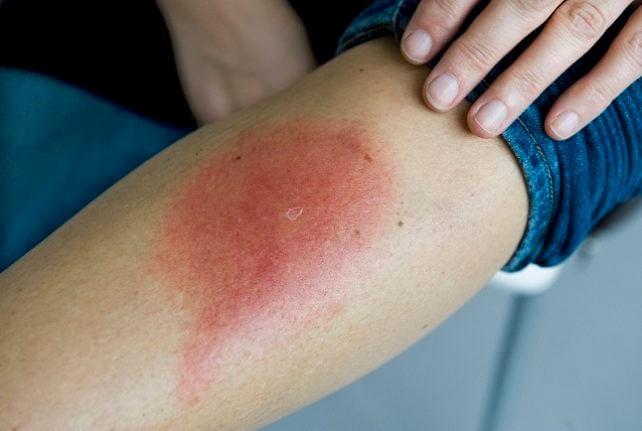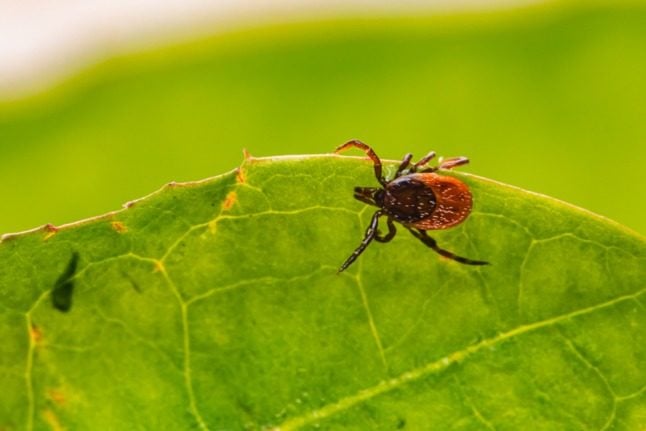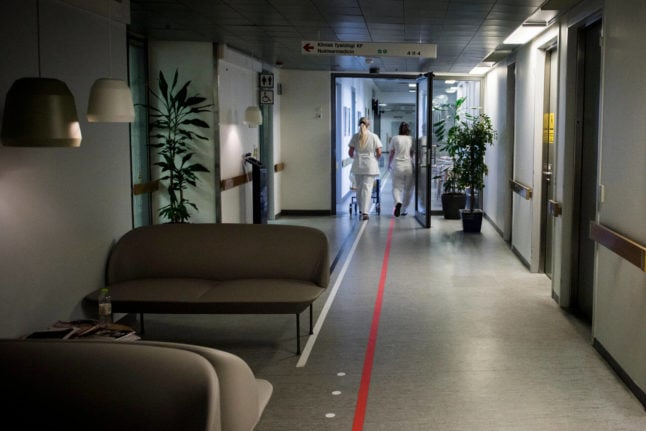When and where do you find them?
Ticks in Italy are mainly found in mountain regions. In Italy, 36 species of ticks are known and the most widespread and relevant species from a health point of view are Ixodes ricinus (the wood tick) and Rhipicephalus sanguineus (the dog tick).
They can be found in forests, meadows, and long grass, meaning the biggest risk is when you’re out in nature – especially hiking or camping.
Ticks are active when the temperature is higher than around 5C, but are most common during the summer months. Tick season is roughly from April to September in Italy, with most bites occurring in summer.
As temperatures rise, the ticks become active and remain so until the following autumn. However, climate change can cause the period of tick activity to vary according to local conditions, according to the Higher Health Institute (ISS).
Climate crisis: Italian beekeepers suffer ‘worst honey harvest ever’
What diseases can they cause?
In Italy, the two main tick-borne diseases are Lyme disease and tick-borne encephalitis or TBE.
A tick bite is not in itself dangerous to humans, according to the ISS, but the health risks depend on the possibility of contracting infections transmitted by these animals.
Lyme disease (also called borreliosis) causes no symptoms in around half of all people who catch it. For others, it can cause skin redness, headaches, and pain, and can attack the nervous system. Symptoms usually appear between two and six weeks after the bite, but can take longer.

TBE is a viral brain infection, which can cause a range of symptoms, usually starting with typical flu-like symptoms and then developing to include nausea, dizziness, and in around a third of cases, severe problems. Symptoms usually appear around a week after the bite, but can take longer. There is no cure, but it can be treated, and there is a vaccination too.
Lyme disease is endemic to various areas of Italy, and because of the increase in temperatures, ticks are now found at higher latitudes and altitudes than in the past.
The regions most affected are Friuli-Venezia Giulia, Liguria, Veneto, Emilia Romagna and Trentino Alto Adige, while reports are sporadic in the central and southern regions and on the islands, reported the ISS.
READ ALSO: How insect invaders are threatening Rome’s iconic pines
Cases of tick-borne infections are increasing across Italy, according to experts.
How can I protect myself?
Lyme disease has no vaccine but can be treated, while TBE cannot be cured but both a vaccine and treatments are available.
Because of the risk of Lyme disease, even if you’re up to date on your TBE vaccines, you should still do what you can to prevent ticks.
If you’ll be spending time in wooded areas with long grass, especially those known to have a high tick presence, take precautions like wearing long sleeved clothing and tucking trousers into socks. Try to avoid brushing against long grasses by walking along the middle of the path where you can.
After returning home from a day out, you should check carefully for ticks and shower shortly after coming inside. This can give you the chance to remove them before they bite, for example if you spot them on your clothes. Putting clothes in a tumble dryer for one hour should kill ticks.
What if I get bitten?
If you do get a tick, you should remove it safely. The sooner you can do this, the lower the risk that it will be able to infect you with Lyme disease as it can take up to 24 hours for the bacteria to be transferred.
It can be done with a special tick remover (which you should be able to buy at most Italian pharmacies) or tweezers.
The important thing is making sure you remove the whole tick, by grabbing it as close to the skin as possible and pulling slowly. Then, wash and clean the bite, and contact a doctor if you’re worried, especially if you experience symptoms of illness in the weeks after being bitten.
How can I get a TBE vaccine?
The vaccine does not protect against other viruses and bacteria that can be transmitted by tick bites, so all possible precautions must be taken to avoid tick bites in at-risk areas.
Vaccination is recommended for those who live in forest and rural areas. In Italy, the highest number of disease caused by the tick-borne encephalitis (TBE) virus in recent years has been recorded in Friuli Venezia Giulia and Trentino Alto-Adige.
You can get vaccinated any time of the year. However, the risk of infection is higher in spring and early summer because ticks need heat and humidity to be active, so the best time to start getting shots is in winter. In this way, you are already protected during the period of maximum tick activity and TBE incidence.
The vaccination programme should be completed with the third dose within the same tick season or before the start of the next one.
Italian vocabulary
Tick – zecca
Lyme disease – borelliosi di Lyme
Tweezers – pinzette



 Please whitelist us to continue reading.
Please whitelist us to continue reading.
Member comments